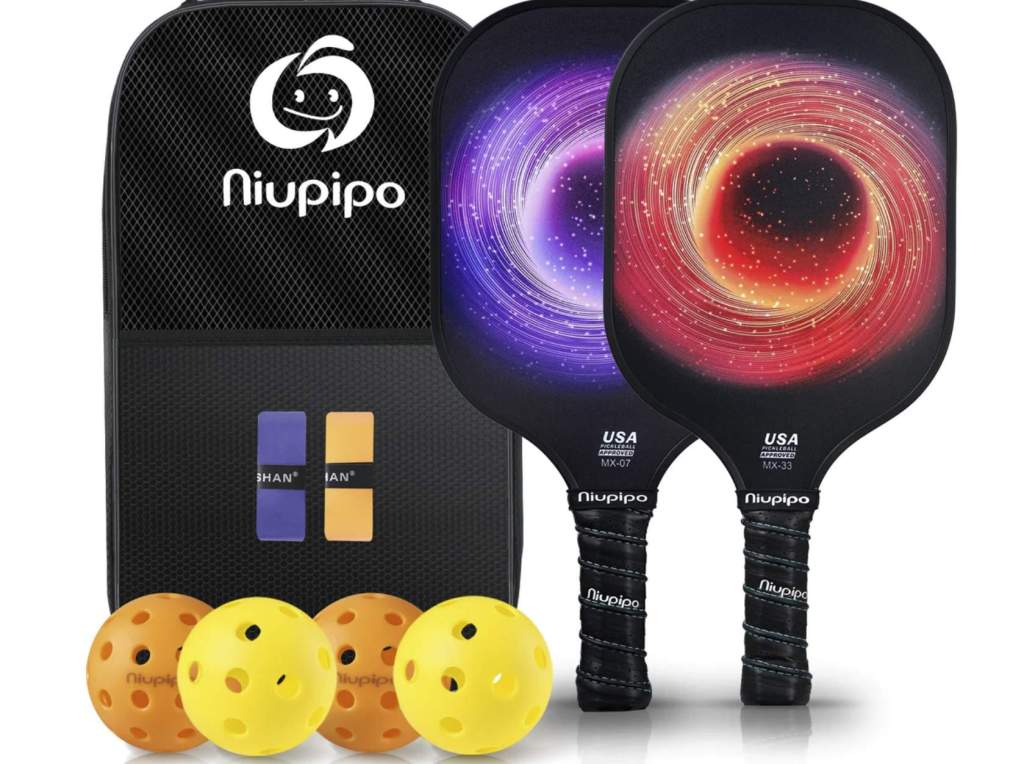Pickleball Paddle Materials: Wood, Composite, And Graphite
Pickleball has quickly risen in popularity as a recreational sport, captivating players of all ages and skill levels. While mastering the game’s techniques is crucial, selecting the right equipment can significantly impact performance. Among the essential components of a pickleball player’s arsenal is the paddle. Paddle materials play a vital role in determining how a player serves, strikes, and maneuvers the ball. This comprehensive guide will delve into the world of pickleball paddle materials, focusing on three primary options: Wood, Composite, and Graphite.

Wood Pickleball Paddles
Wooden paddles hold a special place in the history of pickleball, reflecting the sport’s humble beginnings. These paddles offer a traditional feel and aesthetics that resonate with enthusiasts who appreciate the game’s roots. Crafted from a variety of woods, including maple and plywood, wood paddles provide a unique tactile experience.
One of the defining characteristics of wood paddles is their weight and balance. While some players prefer the heft and stability of wood, others may find it challenging to maneuver quickly on the court. Additionally, wood paddles require careful maintenance to prevent warping or cracking due to moisture and temperature changes.
The pros of using wood paddles include their classic charm and affordability. However, their limited performance capabilities compared to modern alternatives like composite and graphite paddles might not suit players seeking enhanced power and control. Wood paddles are generally recommended for beginners or players who prioritize tradition over advanced features. Discover the full story by following this link https://niupipo.com/.
Composite Pickleball Paddles
Composite materials have revolutionized pickleball paddle design, offering a versatile blend of performance-enhancing characteristics. These paddles typically feature a polymer core combined with a composite face material, such as fiberglass or carbon fiber. The combination of these materials results in a balanced paddle that excels in various aspects of play.
Composite paddles are favored for their ability to deliver power and control in equal measure. The unique composition of these paddles minimizes vibration and enhances shock absorption, contributing to a comfortable and controlled playing experience. Additionally, the variety of available designs and face materials allows players to choose a paddle that suits their style and preferences.
When considering a composite paddle, players should factor in the balance between power and finesse. These paddles excel at striking a middle ground, making them a suitable choice for players who value versatility. Intermediate and advanced players often find composite paddles to be a valuable asset on the court.
Graphite Pickleball Paddles
Graphite paddles have gained popularity for their lightweight design and exceptional maneuverability. These paddles typically consist of a core material, often a polymer or aluminum, sandwiched between layers of graphite. The result is a paddle that offers consistency in performance and responsiveness.
One of the key advantages of graphite paddles is their lightweight construction. This feature allows players to react quickly to the ball and make precise shots with ease. Additionally, graphite paddles can significantly impact ball spin and control, contributing to a player’s ability to manipulate the ball’s trajectory.
Despite their advantages, graphite paddles may not be the best fit for all players. Their lightweight nature can be challenging to control for beginners, and some players may miss the solid feel provided by wood or composite paddles. However, for those seeking speed and finesse, graphite paddles are an excellent option.
Making an Informed Decision
Selecting the right pickleball paddle material requires careful consideration of personal playing style and priorities. Players should evaluate their physical attributes and comfort preferences to determine which material suits them best. It’s essential to recognize that the perfect paddle material may vary from person to person.
Experimentation is key to finding the ideal paddle material. Trying out different materials and designs can provide valuable insights into what works best for individual players. Seeking advice from experienced players and professionals can also offer valuable guidance when making a decision.
Maintenance and Longevity
Caring for pickleball paddles is essential to ensure their longevity and optimal performance. Wood paddles, in particular, require regular maintenance to prevent warping and cracking. Storing paddles in a cool, dry place and avoiding exposure to extreme temperatures can help preserve their quality.
Composite and graphite paddles also benefit from proper care. Regularly cleaning the paddle face and inspecting it for signs of wear and tear can extend its lifespan. Ensuring that the grip remains in good condition is crucial for maintaining control and preventing slipping during play.
Conclusion
In the evolving world of pickleball, choosing the right paddle material is a decision that can significantly impact a player’s performance and enjoyment of the game. Wood, composite, and graphite paddles each offer unique characteristics that cater to different playing styles and skill levels. As the sport continues to grow and develop, paddle technology and materials will undoubtedly evolve, offering players even more options to enhance their experience on the court. Whether players opt for the traditional charm of wood, the versatile performance of composite, or the lightweight finesse of graphite, one thing remains clear: the right pickleball paddle material can make all the difference in the pursuit of mastery and enjoyment of this dynamic and engaging sport.
Read More – The Economics of Lithium Battery Production and Supply Chains






